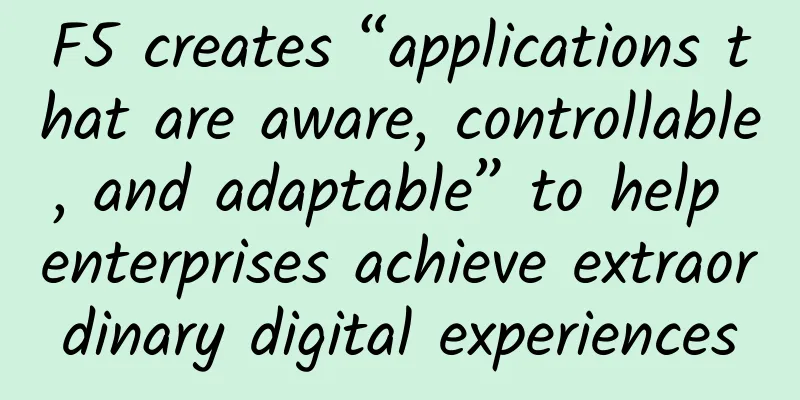Unlocking the shackles of 5G network development: Cloud-native NFV is indispensable

|
The implementation of 5G technology will bring the industry an unprecedented ultra-reliable, low-latency communication experience, but today's mobile networks are not set up according to the needs of 5G. Mobile network limitations are built in the model of 2 traditional telephone networks, with wireless coverage up to one kilometer. In order to make 5G possible, they need to borrow more scalable and flexible network principles from companies such as Netflix and Google to provide cloud-based services. The future network requires more than just RAN upgrades, a new type of core network is needed to provide services, scale, security and quality of experience. These requirements will bring great challenges to network operators, who need to virtualize network functions to support their network services and cost-effectively expand to billions of devices.
The development of two key technologies will free today’s network operators from the shackles of 5G network development: cloud-native NFV and mobile edge computing (MEC). Native cloud NFV is more than just migrating functions to cheaper hardware. This approach effectively leverages the key advantages of cloud computing: it is a new distributed computing environment that is scalable, elastic, and fault-tolerant, without the one-to-one redundancy of traditional telecom networks. Therefore, only native cloud VNFs can reduce the impact of failures at any level of the technology stack through appropriate surplus capacity and automatic repair capabilities. With this technology, 5G networks will be able to automatically repair and smooth, able to meet almost any demand or consumption surge, and network operators will gain new profit points from the transformation from customization to commercialization. However, 5G networks also require other functions at their foundation, namely the core capabilities of the network edge. The low latency expected in 5G networks also brings the need for network operators to move core IT functions closer to the edge of the network. MEC approaches this problem by providing an IT service environment (computing, processing and storage) at the edge of the radio access network (RAN) (once the PGW function is moved from the EPC to the edge). MEC still uses the mobile operator's existing NFV infrastructure, management and business processes, and can use dedicated platforms or other business processes and VNFs to share resources. With the widespread use of MEC in cloud-native virtualized 5G networks, network operators can provide services to users for mobile applications that require high-speed data processing and low latency (augmented reality, autonomous vehicles), providing a new mobile experience. Even on the fastest mobile networks operated by network operators today, MEC can achieve faster response events in applications with transmission and routing delays, as well as incredibly high video resolution and audio quality. The cloud-native approach to NFV and MEC provides network operators with the network foundation they need to build future 5G networks. The good news is that network operators can now evolve their architecture by supporting VoLTE. Using cloud-native VNFs to quickly add IMS functions, network security and media translation through session border controllers, cloud-based message storage and synchronization, and new services created by telephony application servers set up network operators' evolution to 5G networks, while also providing today's network operators with the opportunity to gain additional profit points. What matters most to network operators is the core network technology they are using to support voice services on 4G LTE networks and to pave the way for more flexible and forward-looking offerings. Network operators are now beginning to transform to cloud-native networks to take full advantage of VoLTE, mobile unified communications and a new generation of voice-enabled IoT devices, applications and services, creating a new beginning for network operators to build the network foundation and development environment that will make 5G networks a reality. |
<<: Huawei Cloud meets in a blessed place, connecting the present and future of Fujian
>>: VXLAN L3 applies EVPN to present a complete overlay network
Recommend
HostKvm: Russia CN2 bandwidth upgrade, Russia/Hong Kong high-defense limited 50% discount is in progress
HostKvm is a foreign VPS service provider founded...
Using Jenkins to create continuous integration for microservice applications
Experience Overview This scenario guides you to d...
Huawei 5G Power enables a green and fully connected world
[Shenzhen, China, April 17] At the 2019 Huawei Gl...
In-depth analysis of computer networks and operating systems: essential knowledge analysis for interviews
Computer Network What is TCP congestion control? ...
Tudcloud: Hong Kong VPS monthly payment starts from US$7.2, with options for high bandwidth or unlimited traffic
Tudcloud is a newly opened hosting company that p...
Why IoT needs machine learning to thrive
There has been a lot of discussion about the oppo...
RackNerd Los Angeles DC02 restock, VPS promotion starts at $9.89 per year
Earlier this month, we shared a summary of RackNe...
AI and 5G ranked as top technology trends for 2022 and beyond
In a survey of 350 chief technology officers, chi...
Misaka: $44/year KVM-2GB/32G NVMe/2TB/Germany (optional CN2)
Misaka is a Chinese merchant (the same company as...
KVMLA 11th Anniversary: Japan/Singapore E3 dedicated server special price 280 yuan/month, VPS host 35 yuan/month
KVMLA is a well-established Chinese hosting compa...
Understand the IP location function of the entire network in one article
Recently, WeChat, Douyin, Weibo, public accounts ...
Witnessing the first step of 5G network construction: antenna and feeder integration
The coexistence of multiple standards and frequen...
Synchronous vs. Asynchronous Data Transfer: Which is Better?
In any organization, the network infrastructure h...
How to set IP in CentOS9
Just for record, I found that there are still hug...
Wireless Broadband Alliance: Wi-Fi 6/6E adoption will reach 83% by 2022
[[429983]] A key finding from the latest cross-in...






![[Footprints] In addition to creating a highly available application environment, what else does FreeWheel's operation and maintenance do?](/upload/images/67eba9ff77260.webp)


